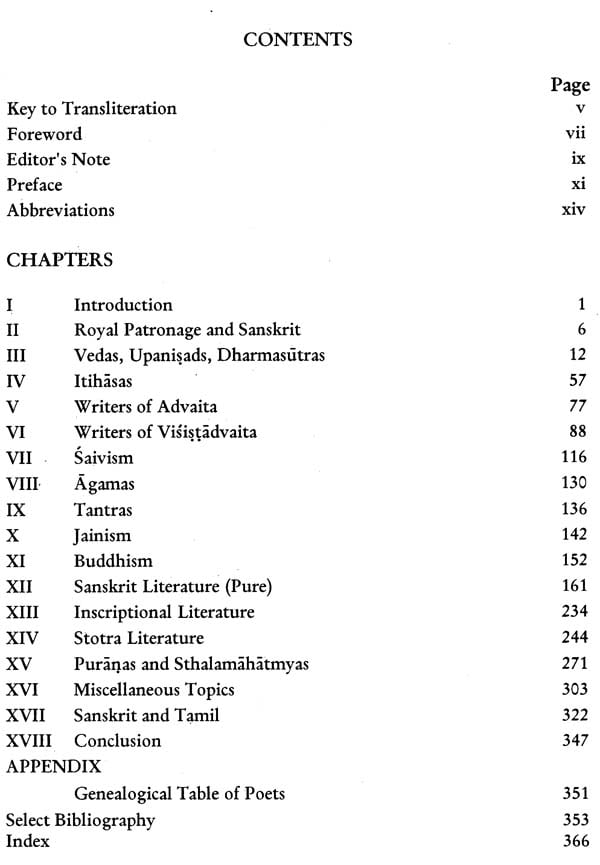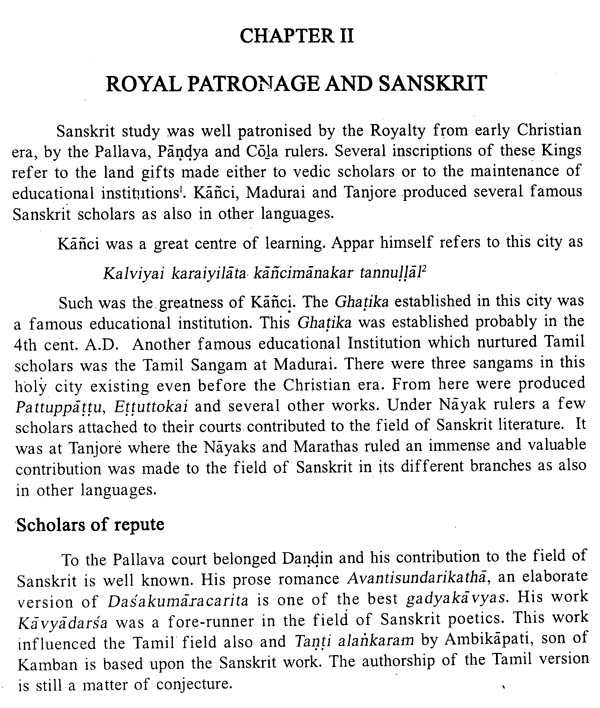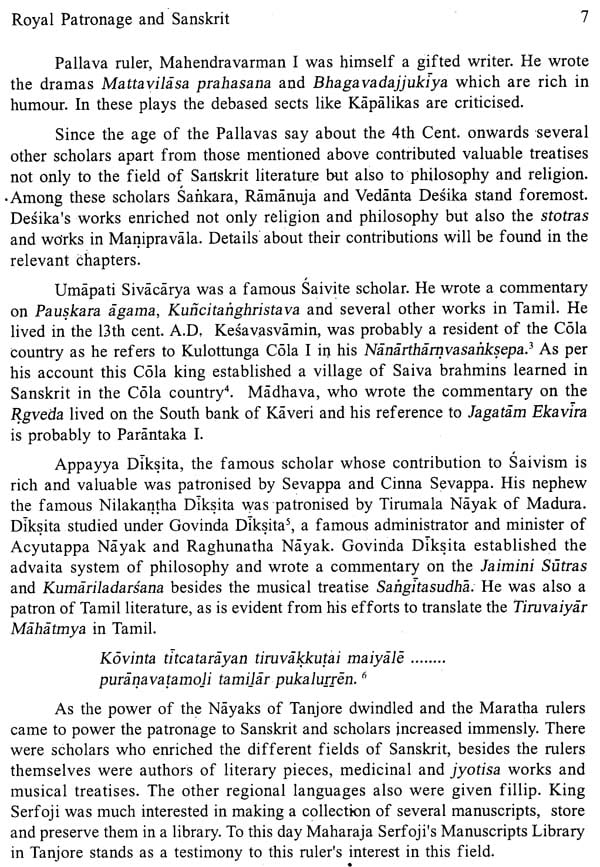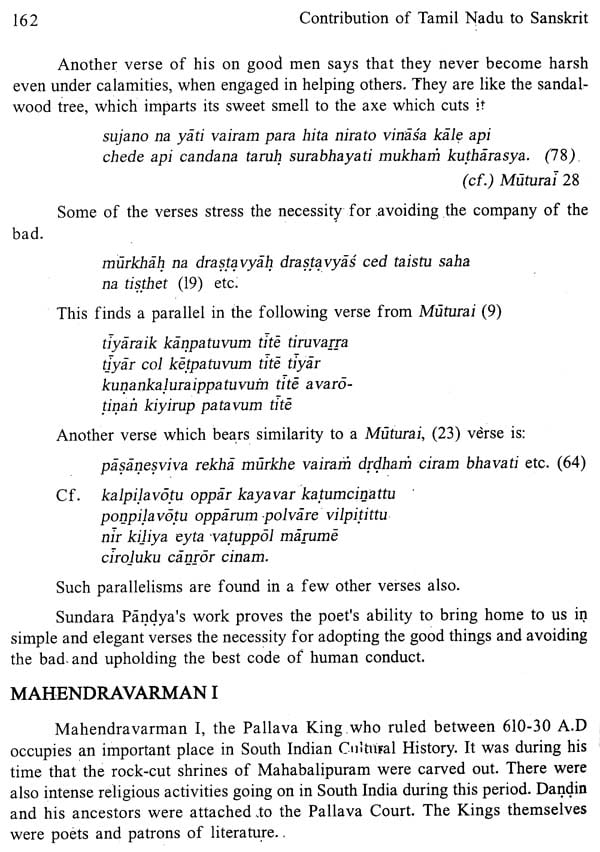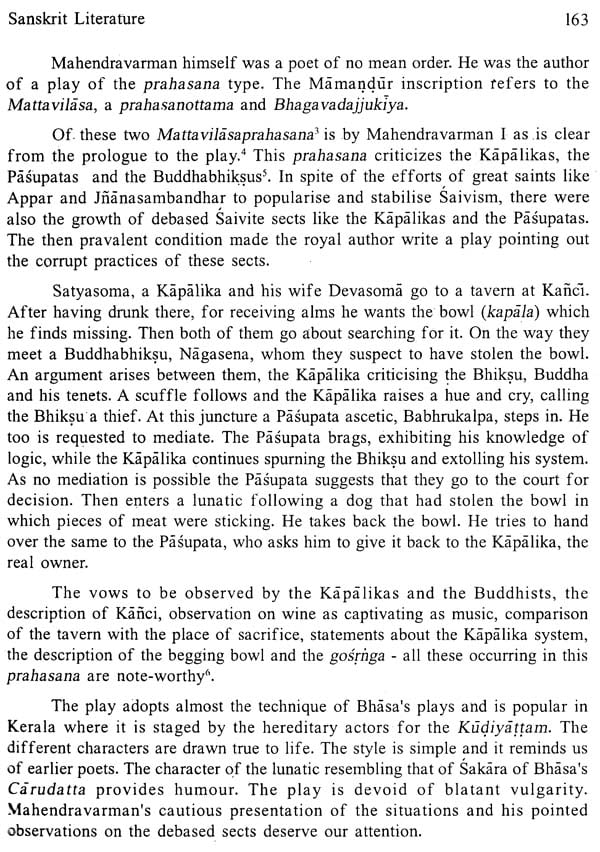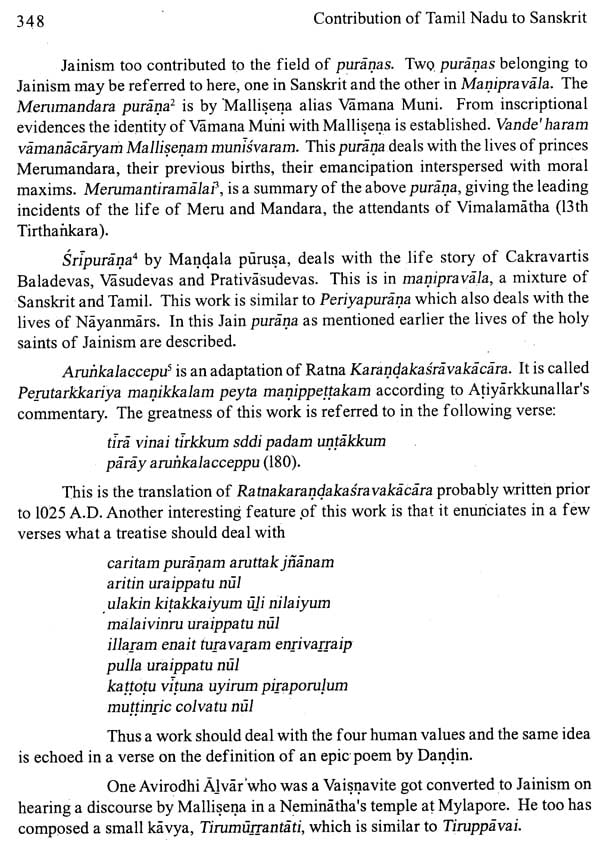
Contribution of Tamil Nadu to Sanskrit (An Old and Rare Book)
Book Specification
| Item Code: | NAY768 |
| Author: | C.S. Sundaran |
| Publisher: | Institute of Asian Studies, Chennai |
| Language: | English |
| Edition: | 1999 |
| ISBN: | 818789217x |
| Pages: | 413 |
| Cover: | PAPERBACK |
| Other Details | 9.50 X 7.00 inch |
| Weight | 660 gm |
Book Description
Late Sri M. Sundarraj, Financial Advisor to Southern Railway has done a great work on interpreting Rig Veda which was appreciated by Agnihotram Ramanuja Thatacharya. Sri Sundarraj has compared the 33 letters of Tamil language according to Tolkappiyam to the 33 Devas mentioned in the Vedas. So both Rig Veda and Tamil grammar are very old nearly 8000 BC according to Tilakar. Indian culture is an amalgamation of Sanskrit and Tamil and Lord Siva according to Tirunavukkarasu has Sanskrit and Tamil as his two eyes.
Recent researches according to vedic astronomy takes us to an ancient time as back as to 10000 BC and research into this aspect of our ancient culture should be the next work to be taken up by scholars. A well coordinated research in Sanskrit and Tamil will go a long way to bring all about our ancient culture to the knowledge of the present world.
If on one side the literature in these languages comprised of religious and philosophical treatises, the evolution of the Bhakti movement, cultural activities and presentation of small or full-fledged plays in temples, on the other side the inscriptions reveal to us the patronage of Vedic scholars and the study of Vedas. Kings themselves were well-versed poets. If Pallavas showed great regard for the Vedic scholars, Colas too supported them. The Nayaks and Maratha rulers had a big role in supporting scholars and encouraging them.
Earlier the classics of the Cankam age give vivid pictures of the monasteries or residential places of the Bauddhas, Jams and the twice-born. These works refer to the sacrifices performed and the support of the rulers. Thus these classics abound in description of both the religious as well as the social life of the people of Tamil Nadu. From these literary sources both in Tamil and Sanskrit, we get an idea of the cultural life of this part of India.
Several families like the Dindima, the Diksitas, the Maratha rulers and individual scholars’ as Udali, Varadaraja, Govindaraja, Vedanta Desika; Ratnakheta Srinivasa Diksita had a definite role in enriching not only Sanskrit but also the other regional languages through their literary works.
On the Epics and the Puranas several commentaries were written and a few of them were translated into Tamil. The sthalamahatmyas narrate the sanctity of the deity, place and the tank found in those shrines. A few of them have been adapted into Tamil. Besides these the life story of the deities worshipped in these places formed the subject matter of several kavyas for eg: the 64 lilas of Siva.
Book's Contents and Sample Pages
